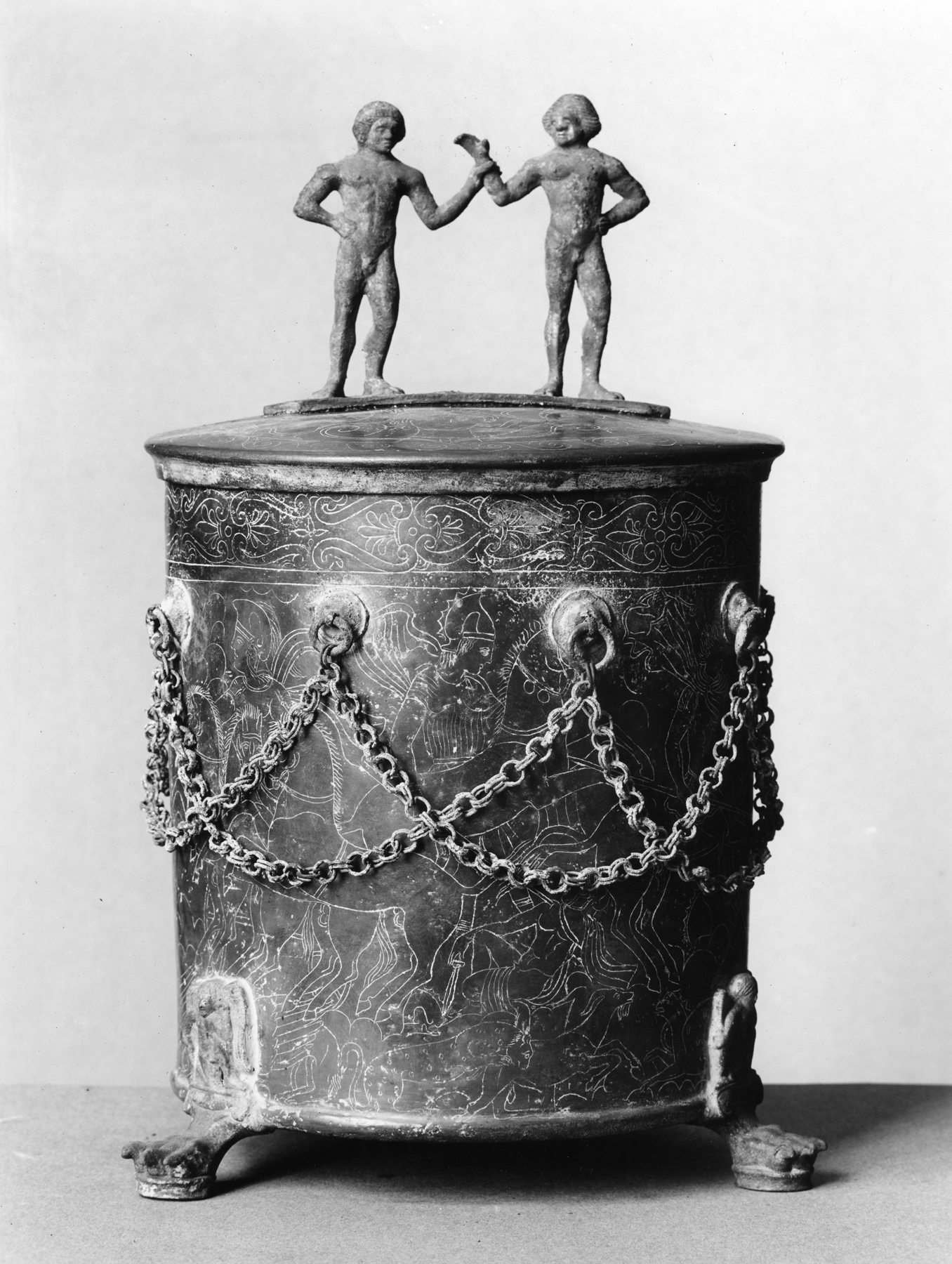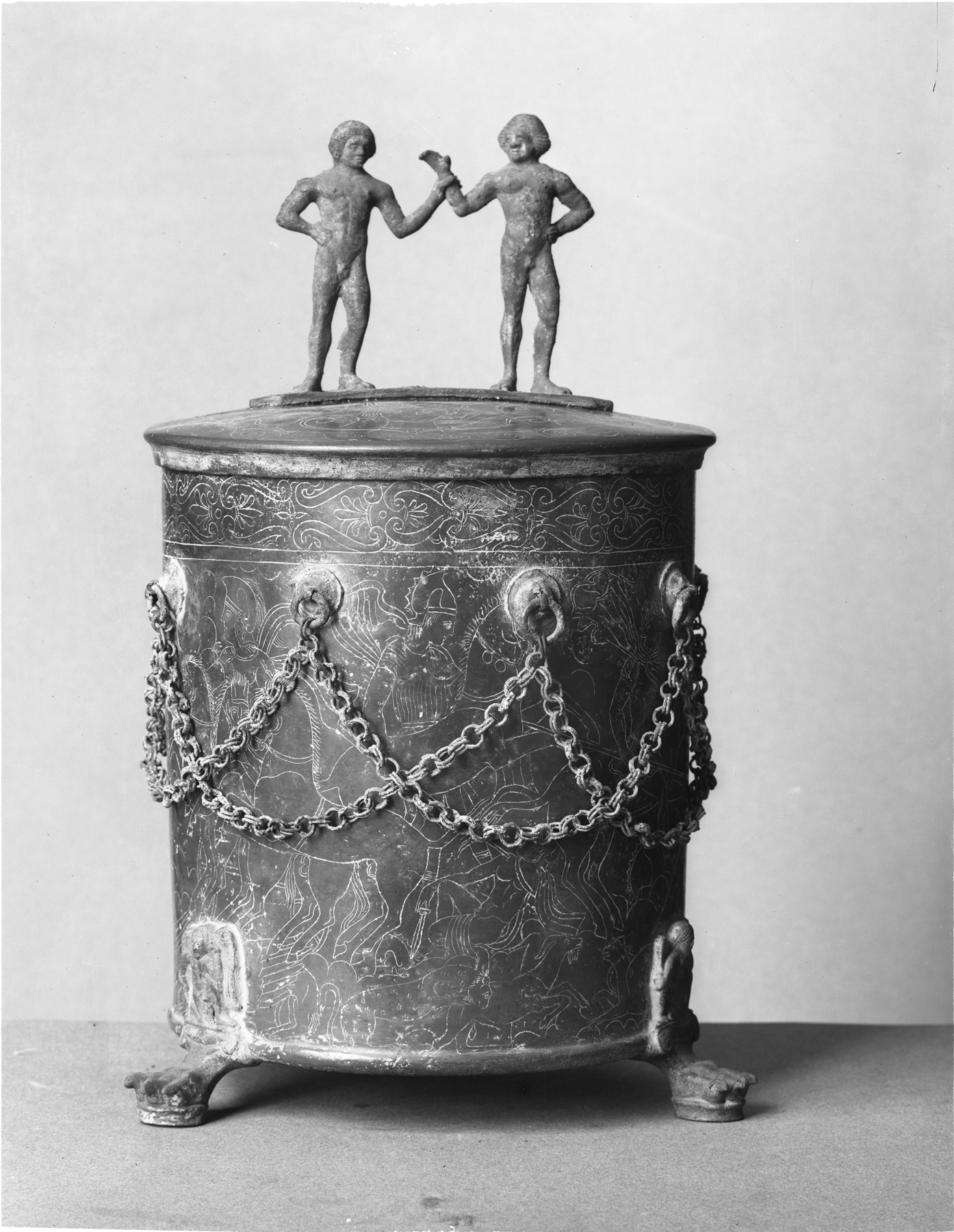Cista with Cover Depicting the Conflict of the Gauls and Etruscans
(Roman Empire )
Cistae were containers used to safeguard precious objects, including mirrors, perfume flasks, and cosmetics. A particular type of cista was made during the 4th to 3rd centuries BCE in Praeneste, a site in Latium (the region around Rome) that was heavily influenced by Etruscan culture. The elaborately engraved scenes are thought to imitate famous, but now lost, Greek wall-paintings. The ancient metalworker often pressed a white substance into the engraved lines in order to accentuate the decoration. The handles commonly take the form of human figures. Many artists in other early Italian cultures similarly incorporated figures of humans in functional objects.
Provenance
Provenance (from the French provenir, 'to come from/forth') is the chronology of the ownership, custody, or location of a historical object. Learn more about provenance at the Walters.
Don Marcello Massarenti Collection, Rome [date and mode of acquisition unknown]; Henry Walters, Baltimore, 1902, by purchase; Walters Art Museum, 1931, by bequest.
Conservation
| Date | Description | Narrative |
|---|---|---|
| 3/12/1953 | Treatment | cleaned; repaired; loss compensation |
| 5/17/1954 | Treatment | repaired; other |
| 3/18/1956 | Treatment | other |
| 3/18/1971 | Treatment | cleaned; repaired; other |
Geographies
Italy, Praeneste (Place of Origin)
Measurements
H: 15 15/16 x W: 9 5/8 x D: 9 5/8 in. (40.5 x 24.5 x 24.5 cm)
Credit Line
Acquired by Henry Walters with the Massarenti Collection, 1902
Location in Museum
Not on view
Accession Number
In libraries, galleries, museums, and archives, an accession number is a unique identifier assigned to each object in the collection.
In libraries, galleries, museums, and archives, an accession number is a unique identifier assigned to each object in the collection.
54.133




